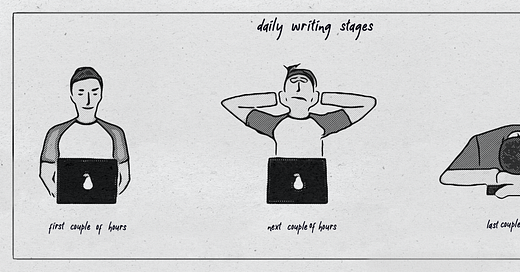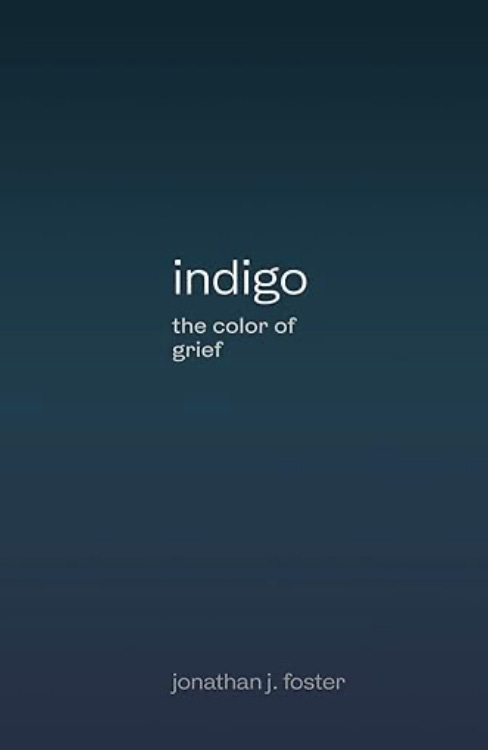Best Substack Introduction Ever
Five Most Viewed jonathan_foster Substack Posts PLUS Something that Emerges at the Corner of Sexuality and Theology PLUS My Snappy AI Dislosure
In today’s post:
‣ Quick Introduction for the New Folks
‣ Headsup on Future Substack Practice
‣ Five Most Viewed jonathan_foster Publications PLUS Something that Emerges at the Corner of Sexuality and Theology
‣ Quick Introduction for the New Folks:
Really glad you’re here. This publication, as well as Substack overall, has seen some growth lately (more about Substack growth in the next point), so in addition to my new and improved about page with it’s snappy AI disclousure, I wanted to offer up a brief introduction for anyone new. Here are eight things about me and/or my writing that might be helpful for you …
1 - I’m into reverse psychology, which is why I pretend I’m not interested in my granddaughter giving me big hugs and also why I typically don’t add a bunch of subscribe or upgrade buttons to these substack posts. 👀
2 - Sometimes, I create little sketches, and they are very funny. I just want you to know this upfront so that you won’t be confused when you see them. Yes, I’m hilarious.
3 - I’m uninterested in boring or insipid writing. I like to put words on a screen that encourage readers to think some, which is why I put the word “insipid” in the previous sentence. If you’re like me, you’re already opening a separate tab and looking up the definition, which is making you think some.
4 - Oh, and if you reread the insipid-sentence and replace “writing” with “theology,” well, that’d be another way to get to know who I am. Or at least who I want to be cuz I can’t be entirely sure that my theology is the opposite of insipid (i.e., flavorful … to save you from opening up that tab again), but I want it to be, and honestly, I think that’s half the battle. When you want something to be a certain way, it usually happens, and damn it, I want my theology to be flavorful.
5 - I write about open and relational theology, which itself emerges out of some non-violent atonement Christianity, some Process Philosophy, and some thinking from a variety of people, not least of which is my friend
. I like the open and relational paradigm. I mean, what’s the alternative? Closed and impersonal? That’s a terrible name for theology.6 - I reference mimetic theory and scapegoating as often as I can because most of the time, I don’t think our most significant problems exist “out there” as much as they exist “out there” because we’ve projected them onto people “out there.” Look, there is evil in the world, but you and I are in the world, too. We know what this means, right? It’s neither accurate nor healthy to think you can stand outside any critique leveled at another person. I know, I know ... this sucks, but it’s scientifically verifiable. Literally, check the science; we all come from the same evolutionary movement.
So, I try and do my best to keep things fluid and permeable when it comes to demarcations between the sacred and secular, the conservatives and progressives, the good people and the bad people, or the Chiefs fans and Raiders fans. Okay, not so much the Chiefs-Raiders thing, cuz obviously, the Raiders organization is evil, but for sure with the other stuff. Yes, fight the injustice, but beware, lest you become like the thing you are fighting.
7 - Speaking of scapegoating … I used to be a pastor in good standing with the Church of the Nazarene. But then the audacity I displayed in refusing to put hard and fast parameters around my LGTBQ+ friends led the denomination to reconsider. Turns out, not only did the ecclesiological hierarchy no longer consider me good, they didn’t even want to be to be seen standing with me. So, they instructed me to mail in my credentials.
I found this to be absurd because, well, imagine the kind of spiritual/cognitive dissonance it takes for a denomination that rallies around a figure who they know was marginalized (Jesus) ... to be unwilling to rally around figures who they know are being marginalized (LGTBQ+). 🤔
I also found this to be a bit humorous because, wait, they want me to “mail in my credentials”? Seriously. Did they think I had them framed and mounted on the wall behind me? Honestly, I couldn’t even find my credentials. True story: they had to print up new papers so that they could revoke my papers.
Oh, and I also found this to be life-changing because I haven’t had a “real job” now in about three years, but hopefully, the algorithmic gods will find my offering here pleasing and will bless this Substack publication enough that you will be motivated to upgrade, like, and restack. (👈🏼 that’s not reverse psychology.)
8 - Maybe it helps you to know that I met my wife in 1986. True story: The first time I saw her, I thought, that’s the kind of girl I’d like to marry. All these years later and yep, I’d do it all again. We’ve had some great times and some terrible times, the worst of which was our daughter’s death in 2015. And now you are probably gaining a clearer picture of what is going on with me and my writing … for good or for bad; my theology will always be filtered through the shadow of losing a twenty-year-old daughter.
Okay, that’s probably enough about me, though maybe it also helps to tell you that people like
said my writing is “helping people metabolize toxic theology.” Plus, Brian Zahnd commented on one of my books, saying it “hums with creative theological thought.” Oh, and Paul Young (The Shack) didn’t say he liked my last book, indigo; he said, “I love, love, love this book.” So, yeah, I’ve got all that going for me.‣ Headsup on future Substack practice
The good news about Substack's growth means more and more people are writing. The bad news is that with more and more people writing we have more and more subscriptions coming into our inboxes.
I suspect you are like me in that there's no way to keep up with all the emails, so my practice moving forward is to post every other week—still on Tuesday mornings—just twice a month rather than weekly. My working hypothesis is that qualitative stuff > quantitative stuff.
Let me know if you have an opinion on this.
Btw, there’s some good discussion and disagreement about best Substack practices going on here about writing less and here about writing more.
‣ Five Most Viewed j_f Substack Posts 🥁…
5Reframing Power
4Love Trumps Hate or Love Trump’s Hate
3Deep Withness
2I Changed My Mind About Hell When I Realized These 24 Things
1At-One-Ment
And finally, the bonus portion of today’s post👇🏼
At the Corner of Sexuality and Theology
Recently, I moved some essays from behind the paywall. Responding to Reflections by the NTS President Regarding Human Sexuality is one that was read quite a bit on my blog before I moved it over here to Substack.
Honestly, it cost me a lot to write this. I hope you’ll share it with a friend as it’s relevant for our time, regardless of doctrinal positions, and feel free to leave a comment regarding what you found to be helpful or confusing.
Hey, did you know? If you're using the Substack App, you can have publications read to you now. In the old days (ha, last year), we had to record the audio, but now, Substack offers some pretty nice AI voices. When I don't record the audio myself, I'm using a voice named "Oliver." Even though it will only get better, the tech is already pretty astounding.
Speaking of AI, you can read my AI disclosure on my about page, but the bottom line is, neither my Substack nor my book writing will ever be written by AI. This is a human endeavor.
Thanks everyone, ✌🏼









I'm one of the new-to-you readers (but not new to substack). And I appreciated this introduction to you and your work.